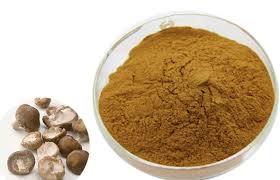他拉泊芬注射剂(LASERPHYRIN FOR INJECTION)
产地国家:日本
处方药:是
包装规格: 100毫克/支
计价单位:支
生产厂家中文参考译名:无
生产厂家英文名:Meiji Seika Pharma
原产地英文商品名:LASERPHYRIN FOR INJECTION (注射用レザフィリン)100mg/vial
原产地英文药品名:Talaporfin Sodium
中文参考商品译名:LASERPHYRIN(注射用レザフィリン)100毫克/瓶
中文参考药品译名:他拉泊芬
曾用名:无
简介
部份中文他拉泊芬处方资料(仅供参考) 治疗类别名称:光动力疗法用剂 商标名:LASERPHYRIN 100mg FOR INJECTION 性 状:他拉泊芬钠是一种深蓝绿色粉末。此产品易溶于水,乙酸(100),以促进微溶,微溶于甲醇,乙醇(99.5)非常微溶,并在乙腈中几乎不溶。旋光[α]20546:约+1000°(0.02克那些转化为脱水,水,500毫升为100mm)。 本产品是吸湿一般名タラポルフィンナトリウム Talaporfin Sodium 化学名:(+)-tetrasodium(2S,3S)-18-carboxylato-20-[N-(S)-1,2-dicarboxylatoethyl]carbamoylmethyl-13-ethyl-3,7,12,17-tetramethyl-8-vinylchlorin-2-propanoate 分子式:C38H37N5Na4O9 分子量:799.69 构造式融 点:約150℃(分解点)分配係数(log10 1-オクタノール層/水層)(下表参照)pH2pH4pH6pH8~12>3.002.08-1.58<-3.00条件批准在建立药品风险管理计划的顶部,要正确实施。 1.早期肺癌1)的整体管理的情况下尽可能多地从批准,按照本药物,生存,或类似的光动力疗法施行后复发三年营销后调查,受试者要考虑长期预后。对调查结果,它被提交的总结的结果与在外科手术等的其它处理结果进行比较。 2)根据药物接收的训练为光动力学治疗,如所使用的唯一的医生具有足够的知识和经验相关的治疗,采取必要的措施。 2.原发性恶性脑肿瘤收到的光动力学治疗的训练根据药物,如所使用的唯一的医生具有足够的知识和经验相关的治疗,采取必要的措施。 3.放化疗或局部复发持续食管癌放射治疗后收到的光动力学治疗的训练根据药物,如所使用的唯一的医生具有足够的知识和经验相关的治疗,采取必要的措施。 适应病症 1.如果不能其他治疗性治疗,如手术切除,或者,在的情况下的其他疗法对有需要的病人的肺功能保存不能被使用,并且,内窥镜观察病变全貌,以下疾病到的激光照射。早期肺癌(疾病分期0或I期肺癌) 2.原发性恶性脑肿瘤(前提是你要强制执行一个乳房肿瘤切除术) 3.放化疗或局部复发持续食管癌放射治疗后 用法用量 1.*早期肺癌,化疗和放射治疗,或本地持久复发食道癌放射治疗后通常,成人为40mg/m 2至单次静脉内注射。激光照射到静脉注射4-6小时后的病变部位。 2.原发性恶性脑肿瘤通常,成人为40mg/ m 2至单次静脉内注射。静脉内注射22-26小时后的激光照射到病变部位。 药效药理 1.药理作用本剂疗法,裸鼠移植人肺癌(5,10mg/ kg,静脉给药),人成胶质细胞瘤来源的细胞系(T98G,A172和U251)和人食管癌来源的细胞系(TE-5和TE-10这表明针对抗肿瘤作用)。 2.作用机序和特性机制通过照射激光束到他拉泊芬钠的单线态氧产生。这单线态氧具有对肿瘤细胞的直接的损伤,或通过破坏肿瘤血管,它被认为是显示出抗肿瘤作用。 包装规格:100毫克×1瓶 制造厂商:明治制果制药社英文版说明
Approval details may vary by country. Medicines have adverse reactions (risks) as well as efficacies (benefits). It is important to minimize adverse reactions and maximize efficacy. To obtain a better therapeutic response, patients should understand their medication and cooperate with the treatment.Brand name : LASERPHYRIN 100mg FOR INJECTION Active ingredient: Talaporfin sodium Dosage form: injection Print on wrapping:Effects of this medicineThis medicine gathers in and around tumor cells and reacts to laser light to exert an antitumor effect.It is usually used to treat early-stage lung cancer, primary malignant brain tumor (only when surgical removal of the tumor is performed) and local failure after chemoradiotherapy or radiotherapy for esophageal cancer eligible for laser irradiation. Thus, this is a local treatment and is ineffective on non-irradiated laser site.Before using this medicine, be sure to tell your doctor and pharmacist•If you have previously experienced any allergic reactions (itch, rash, etc.) to any medicines.If you have porphyria.•If you are pregnant or breastfeeding.•If you are taking any other medicinal products. (Some medicines may interact to enhance or diminish medicinal effects. Beware of over-the-counter medicines and dietary supplements as well as other prescription medicines.)Dosing schedule (How to take this medicine)•Your dosing schedule prescribed by your doctor is <<to be written by a healthcare professional>>•Early-stage lung cancer, local failure after chemoradiotherapy or radiotherapy for esophageal cancer: In general, this medicine is injected once intravenously. The target lesion is then irradiated by laser light 4 to 6 hours after the injection.Primary malignant brain tumor: In general, this medicine is injected once intravenously. The target lesion is then irradiated by laser light 22 to 26 hours after the injection.•The treatment period with this medicine is determined based on the response to the treatment. Ask the doctor about the treatment span.Precautions while taking this medicine•In treatment of local failure in patients with esophageal cancer, dietary intake may cause intense inflammation and weakening of the tissues, resulting in esophageal perforation. For this reason, the patients should fast from the morning on the day of administration until the following day of laser irradiation and receive nutritional care with fluid replacement.•This medicine may cause photosensitivity. Avoid direct sunlight and stay in rooms conditioned at lighting intensity of 500 lux or less by using shade curtains for 2 weeks after the injection. Wear sunglasses for 3 days after the injection.Possible adverse reactions to this medicineThe most commonly reported adverse reactions include increased sputum, bloody sputum, cough, sore throat, fever and esophageal pain. If any of these symptoms occur, consult with your doctor or pharmacist.The symptoms described below are rarely seen as initial symptoms of the adverse reactions indicated in brackets. If any of these symptoms occur, stop taking this medicine and see your doctor immediately.•breathing difficulty, shortness of breath on exertion [respiratory distress]•general malaise, loss of appetite, yellowing of the skin and the white of eyes [liver dysfunction]Meiji Seika Pharma Co., Ltd.InjectionRevised: 8/2015The above symptoms do not describe all the adverse reactions to this medicine. Consult with your doctor or pharmacist if you notice any symptoms of concern other than those listed above.Advantages of laserphyrin compared with photofrin in photodynamic therapy for bile duct carcinomaAbstractBackgroundThe aim of this study was to compare the effects of laserphyrin-PDT (L-PDT) on biliary cancer with those of the conventional photosensitizer, photofrin-PDT (P-PDT).MethodsAn animal tumor model was established by inoculation of NOZ cells in 4-week-old male BALB/c mice. The laser light wavelength was set at 630 nm for P-PDT and 660 nm for L-PDT, at a frequency of 10 Hz. Each group received a total energy flux of 60 J/cm2. The proportion of TUNEL (terminal deoxynucleotidyl transferase-mediated dUTP-biotin nick-end labeling)-positive cells, expression of VEGF (vascular endothelial growth factor) and the PCNA (proliferating cell nuclear antigen)-labeling index (LI) were assessed after PDT.ResultsL-PDT had significantly more potent apoptotic effects at 48 and 72 h after light exposure compared with P-PDT (P < 0.001). The mean PCNA-LI was significantly lower in the L-PDT group than the P-PDT group and the index was significantly lower at several time points after PDT (6, 12, 24, 48 and 72 h after laser light exposure) in the L-PDT than P-PDT (P < 0.001 vs. control). The cell proliferative activity was significantly decreased at 12 and 24 h after P-PDT compared with the control (P < 0.001). VEGF expression was significantly higher at 3 h after L-PDT compared with the control (P < 0.05), whereas it was significantly higher at many time points after P-PDT (3, 6, 48 and 72 h; P < 0.05 vs. control).ConclusionsL-PDT is a better approach for biliary cancer than the conventional P-PDT, based on its potent apoptotic and cytostatic effects.用药温馨提示:当您服用此药物时,需定期接受医疗专业人士的检查,以便随时针对其药效、副作用等情况进行监测。本网站所包含的信息旨在为患者提供帮助,不能代替医学建议和治疗。
药品价格查询,专业药品查询网站,药品说明书查询,药品比价 » 他拉泊芬注射剂(LASERPHYRIN FOR INJECTION)
药品价格查询,专业药品查询网站,药品说明书查询,药品比价 » 他拉泊芬注射剂(LASERPHYRIN FOR INJECTION)





